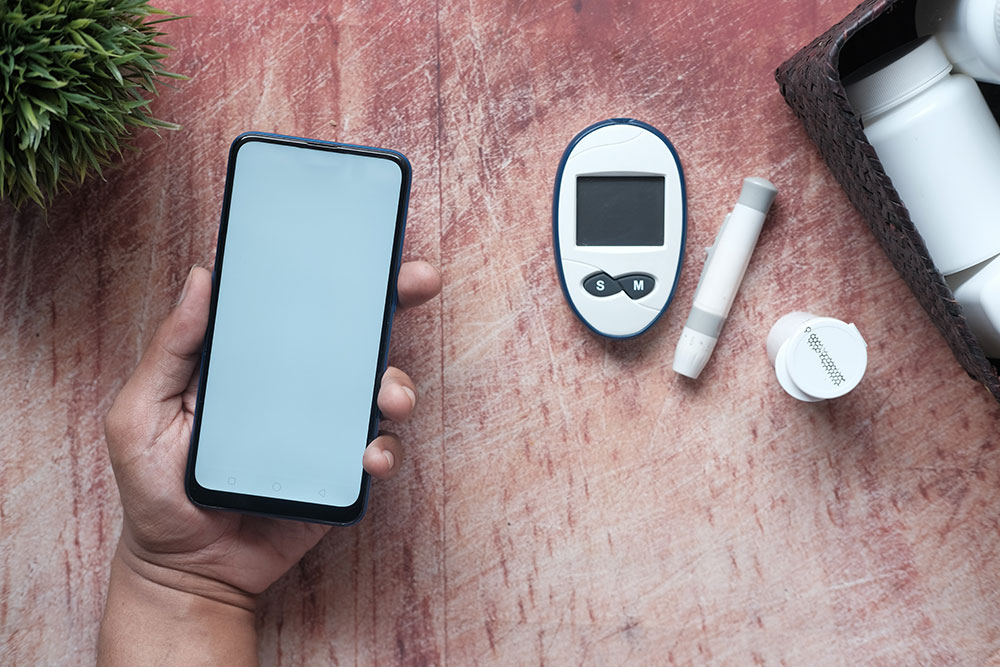Diabetes, a chronic metabolic disorder, has become a global epidemic: Understanding Diabetes, affecting millions worldwide. This condition occurs when the body is unable to effectively regulate blood sugar levels, leading to high levels of glucose in the bloodstream. It is characterized by two main types: type 1 diabetes, where the body fails to produce insulin, and type 2 diabetes, where the body becomes resistant to insulin’s effects.
The prevalence of diabetes has been steadily increasing over the years, largely due to sedentary lifestyles, unhealthy eating habits, and rising obesity rates. If left unmanaged, diabetes can lead to serious complications such as heart disease, kidney damage, nerve damage, and vision problems. However, with proper information and awareness, individuals can take control of their condition and lead fulfilling lives.
This introduction aims to raise awareness about diabetes, its causes, symptoms, and available treatment options. By understanding the risk factors and early signs of diabetes, individuals can make informed choices to prevent or manage the condition. Additionally, it is crucial to educate the general public about healthy lifestyle practices, including regular physical activity and balanced diets, which play a vital role in diabetes prevention and management.
By disseminating accurate and up-to-date information, we hope to empower individuals, families, and communities to take charge of their health and effectively combat the challenges posed by diabetes. With increased information awareness, we can foster a supportive environment that promotes early diagnosis, timely intervention, and improved overall well-being for people living with diabetes.
What Are Some Early Signs of Being Diabetic?
Some early signs of diabetes can vary depending on the type of diabetes. Here are common early signs to look out for:
Frequent urination: Increased urination, especially during the night (nocturia), is a common symptom as the body tries to eliminate excess glucose.
Excessive thirst: Feeling constantly thirsty and having an unquenchable need for fluids, often accompanied by dry mouth.
Unexplained weight loss: Sudden and unintentional weight loss can occur due to the body’s inability to properly utilize glucose for energy.
Increased hunger: Despite eating regularly, individuals may experience persistent hunger due to the body’s inability to regulate blood sugar levels effectively.
Fatigue and weakness: Feeling tired, fatigued, and lacking energy, even after getting adequate rest.
Blurred vision: High blood sugar levels can cause fluid imbalances in the eyes, resulting in temporary changes in vision.
Slow healing of wounds: Diabetes can affect the body’s ability to heal, causing cuts or sores to take longer to recover.
Tingling or numbness: Nerve damage caused by diabetes, known as diabetic neuropathy, can lead to tingling or numbness in the hands, feet, or legs.
If you experience these symptoms, it is important to consult a healthcare professional for proper evaluation and diagnosis.
How to understand and recognize the 3 Main Signs of Diabetes?
The three main signs of diabetes, regardless of type, are commonly referred to as the “3 P’s”:
Polyuria: This refers to frequent urination. People with diabetes often experience an increased need to urinate, particularly during the night (nocturia). The kidneys work to eliminate excess glucose from the bloodstream, leading to increased urine production.
Polydipsia: Polydipsia refers to excessive thirst. Individuals with diabetes often feel constantly thirsty and have an unquenchable need for fluids. This excessive thirst is triggered by the body’s attempt to replenish the fluids lost through frequent urination.
Polyphagia: Polyphagia refers to increased hunger or excessive appetite. Despite eating regularly, individuals with diabetes may experience persistent hunger. The body’s inability to properly use glucose for energy leads to a feeling of constant hunger.
Experiencing these three main signs—polyuria, polydipsia, and polyphagia—may indicate the presence of diabetes. However, it is important to note that these signs can vary in intensity and may not be exclusive to diabetes. If you are experiencing these symptoms, it is advisable to consult a healthcare professional for proper evaluation and diagnosis.

What Are the 7 Common Symptoms of Diabetes?
The seven common symptoms of diabetes include:
Frequent urination: Increased urination, especially during the night (nocturia), as the body attempts to eliminate excess glucose.
Excessive thirst: Feeling constantly thirsty and having an unquenchable need for fluids due to dehydration caused by frequent urination.
Unexplained weight loss: Sudden and unintentional weight loss can occur as the body is unable to properly utilize glucose for energy.
Increased hunger: Persistent hunger despite regular meals, caused by the body’s inability to regulate blood sugar levels effectively.
Fatigue and weakness: Feeling tired, fatigued, and lacking energy, even after getting sufficient rest.
Blurred vision: High blood sugar levels can cause fluid imbalances in the eyes, resulting in temporary changes in vision.
Slow healing of wounds: Diabetes can impair the body’s ability to heal, leading to cuts, sores, or infections that take longer to recover.
These symptoms may vary in intensity and can be present in both type 1 and type 2 diabetes. It is important to note that experiencing these symptoms does not necessarily indicate diabetes, but it is recommended to consult a healthcare professional for proper evaluation and diagnosis.
Understanding How Does Diabetes Occur?
Diabetes occurs when there is a problem with the hormone insulin, which is responsible for regulating blood sugar levels. In a healthy individual, when food is consumed, the body breaks down carbohydrates into glucose, which enters the bloodstream. In response, the pancreas releases insulin, which enables cells to absorb glucose and use it as a source of energy.
In type 1 diabetes, the immune system mistakenly attacks and destroys the insulin-producing cells in the pancreas. As a result, the pancreas is unable to produce insulin or produces very little. This autoimmune condition usually develops early in life and requires lifelong insulin injections or the use of an insulin pump to manage blood sugar levels.
In type 2 diabetes, the body becomes resistant to the effects of insulin or fails to produce enough insulin to meet the body’s needs. This form of diabetes is often linked to lifestyle factors such as obesity, sedentary behavior, and poor diet. Type 2 diabetes is more common in adults, but it is increasingly affecting younger individuals due to rising obesity rates.
Other forms of diabetes include gestational diabetes, which occurs during pregnancy, and prediabetes, a condition in which blood sugar levels are higher than normal but not yet in the diabetic range.
Ultimately, diabetes occurs when there is a disruption in insulin production, insulin action, or both, leading to elevated blood sugar levels and various metabolic complications.
What Is the Main Cause of Diabetes?
The main cause of diabetes varies depending on the type of diabetes:
Type 1 Diabetes: The exact cause of type 1 diabetes is not fully understood. It is believed to result from a combination of genetic factors and an autoimmune response, where the body’s immune system mistakenly attacks and destroys the insulin-producing cells in the pancreas. It is not directly linked to lifestyle or diet factors.
Type 2 Diabetes: The primary cause of type 2 diabetes is a combination of genetic predisposition and lifestyle factors. Being overweight or obese, leading a sedentary lifestyle, and having an unhealthy diet high in processed foods, sugar, and unhealthy fats increase the risk of developing type 2 diabetes. The body becomes resistant to insulin, and the pancreas may not produce enough insulin to compensate for this resistance.
Gestational Diabetes: Gestational diabetes occurs during pregnancy and is primarily caused by hormonal changes that affect insulin sensitivity. Women who are overweight, have a family history of diabetes, or have had gestational diabetes in previous pregnancies are at higher risk.
In addition to these main causes, there are other factors that can contribute to the development of diabetes, such as age, family history, ethnicity, and certain medical conditions or medications. It is important to note that while these factors increase the risk of developing diabetes, they do not guarantee its occurrence. Adopting a healthy lifestyle, including regular exercise, a balanced diet, and weight management, can help reduce the risk of developing type 2 diabetes and manage the condition effectively.
Understanding this Global Epidemic: Is Diabetes Contagious?
No, diabetes is not contagious. It cannot be spread from person to person like a common cold or a viral infection. Diabetes is a non-communicable disease that is primarily caused by genetic and lifestyle factors, as discussed earlier. It is not caused by any infectious agent or pathogen.
However, it is important to note that there are certain risk factors for developing type 2 diabetes that can be influenced by lifestyle choices. These include obesity, sedentary behavior, unhealthy diet, and other related factors. While these risk factors can be influenced by social and environmental factors, diabetes itself is not contagious.
If someone in your family has diabetes, it does not mean you will automatically develop the condition. However, having a family history of diabetes can increase your risk, so it is important to be aware of the risk factors and take preventive measures such as maintaining a healthy lifestyle and getting regular check-ups to monitor your blood sugar levels.
Remember, diabetes is a chronic condition that requires proper management and lifestyle adjustments, but it cannot be transmitted or caught from another person.

Is Diabetes Deadly?
Diabetes itself is not inherently deadly, but if left unmanaged or poorly controlled, it can lead to serious complications that can be life-threatening. High blood sugar levels over time can damage various organs and systems in the body, increasing the risk of developing severe health issues. Some potential complications of uncontrolled diabetes include:
Cardiovascular problems: Diabetes significantly increases the risk of heart disease, heart attacks, stroke, and other cardiovascular conditions.
Kidney damage: Uncontrolled diabetes can lead to kidney damage or even kidney failure, requiring dialysis or kidney transplantation.
Nerve damage: Diabetes can cause peripheral neuropathy, leading to pain, tingling, numbness, and even loss of sensation in the extremities. It can also affect autonomic nerves, leading to digestive, urinary, and sexual problems.
Eye problems: Diabetes can damage the blood vessels in the retina, leading to diabetic retinopathy, which can result in vision impairment and even blindness if left untreated.
Foot complications: Diabetes can cause poor circulation and nerve damage in the feet, leading to foot ulcers, infections, and in severe cases, amputations.
Compromised immune system: Diabetes can weaken the immune system, making individuals more susceptible to infections, which can be life-threatening in some cases.
However, it’s important to note that with proper management, including medication, lifestyle changes (such as a healthy diet and regular exercise), and regular medical check-ups, the risk of complications can be significantly reduced. It is crucial for individuals with diabetes to work closely with healthcare professionals to maintain good blood sugar control and manage any potential complications effectively.
Brought to you by Fomat Medical

